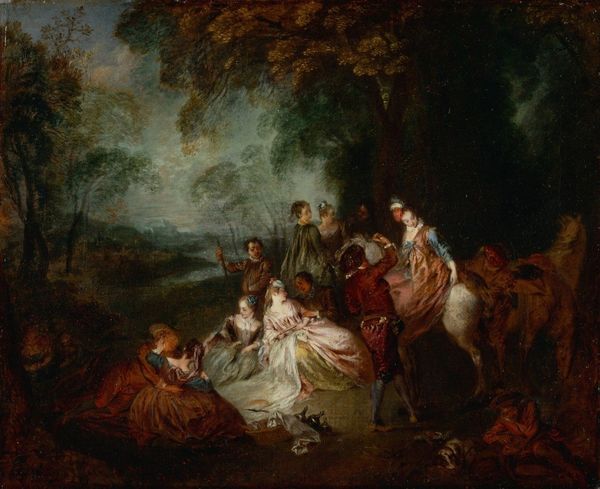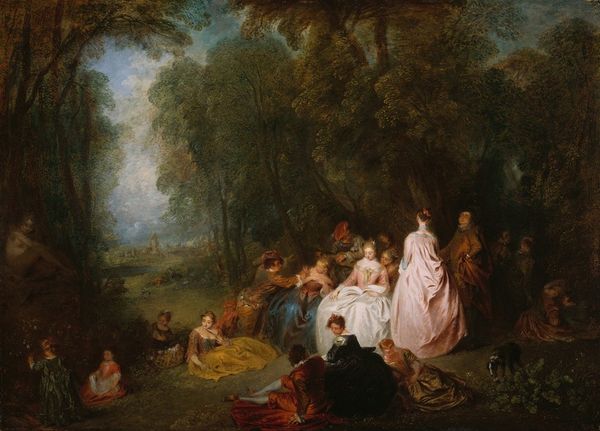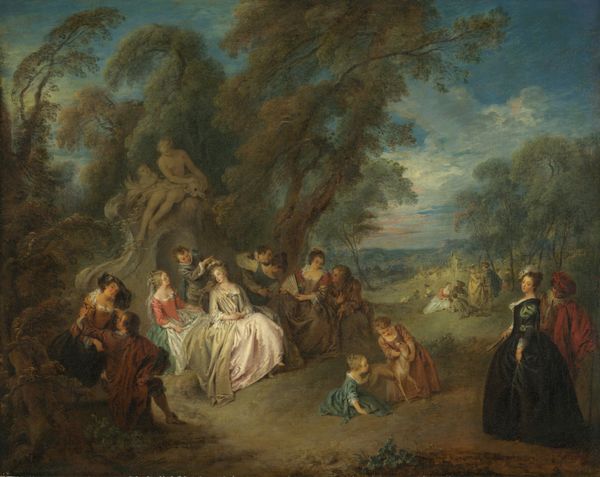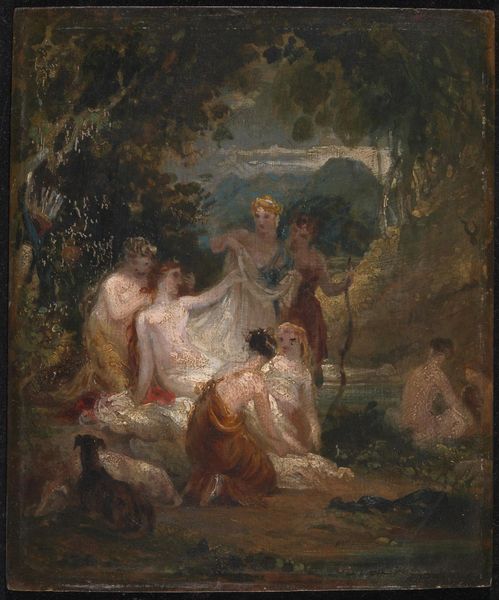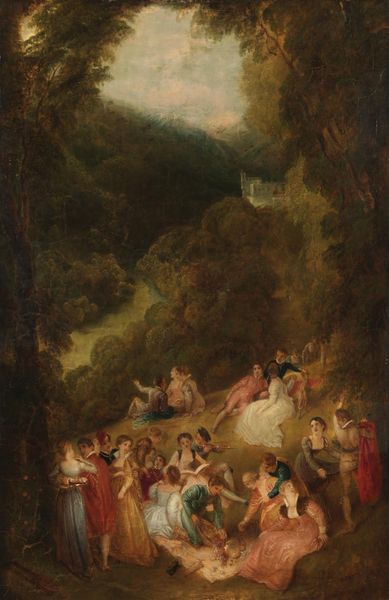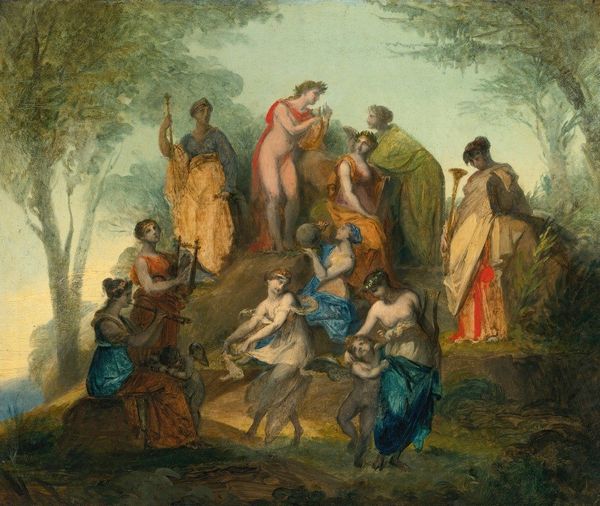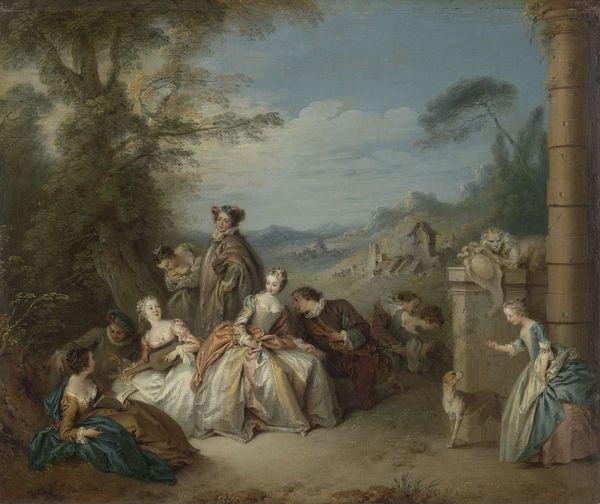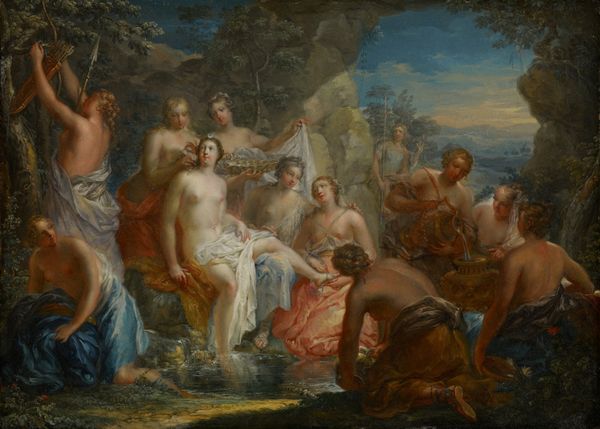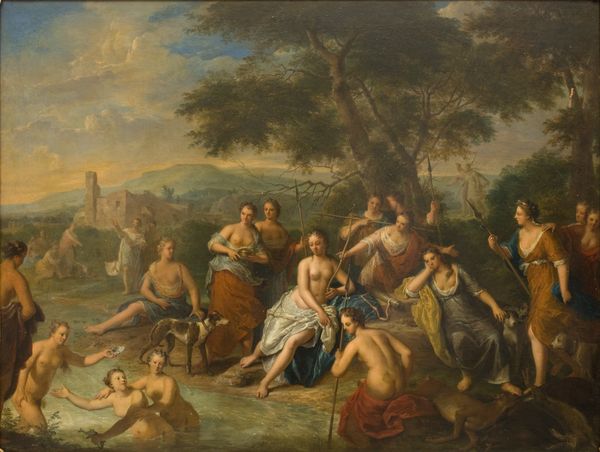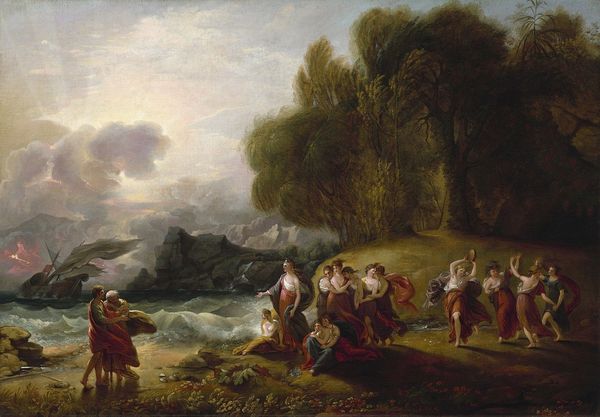
Dimensions: support: 940 x 1111 mm frame: 1130 x 1315 x 90 mm
Copyright: CC-BY-NC-ND 4.0 DEED, Photo: Tate
Editor: Here we have Sir Thomas Lawrence's "Homer Reciting his Poems." I'm really struck by how theatrical it feels, almost like a stage production. What elements stand out to you? Curator: It’s interesting you say that, because Lawrence was acutely aware of his public image and the role of art in shaping national identity. Consider how the painting presents Homer not just as a poet, but as a cultural icon. How does it position him within the narrative of British art and society? Editor: So it’s not just a depiction of Homer, but a statement about the importance of art and culture in general? Curator: Precisely. Lawrence uses the visual language of history painting to elevate Homer and, by extension, the role of the artist in society. It's a strategic move in the cultural landscape of the time. Editor: That makes me see it in a completely different light. Thanks for that insight! Curator: My pleasure. It's always rewarding to unpack the layers of meaning embedded within these works.
Comments
tatebritain 6 months ago
⋮
http://www.tate.org.uk/art/artworks/lawrence-homer-reciting-his-poems-t01974
Join the conversation
Join millions of artists and users on Artera today and experience the ultimate creative platform.
tatebritain 6 months ago
⋮
For most of his career, Lawrence featured in the Royal Academy exhibitions as a portrait painter. He became President of the Academy and, like his predecessor Joshua Reynolds, aspired to be a history painter. This early work was exhibited in 1791. It was painted for the connoisseur, Richard Payne Knight, and its subject and style were calculated to suit his classical taste. In a woodland glade, the Greek poet Homer is shown reciting his Iliad to an admiring audience. The nude youth in the foreground was drawn from a famous pugilist (professional boxer) named Jackson. Gallery label, February 2016
